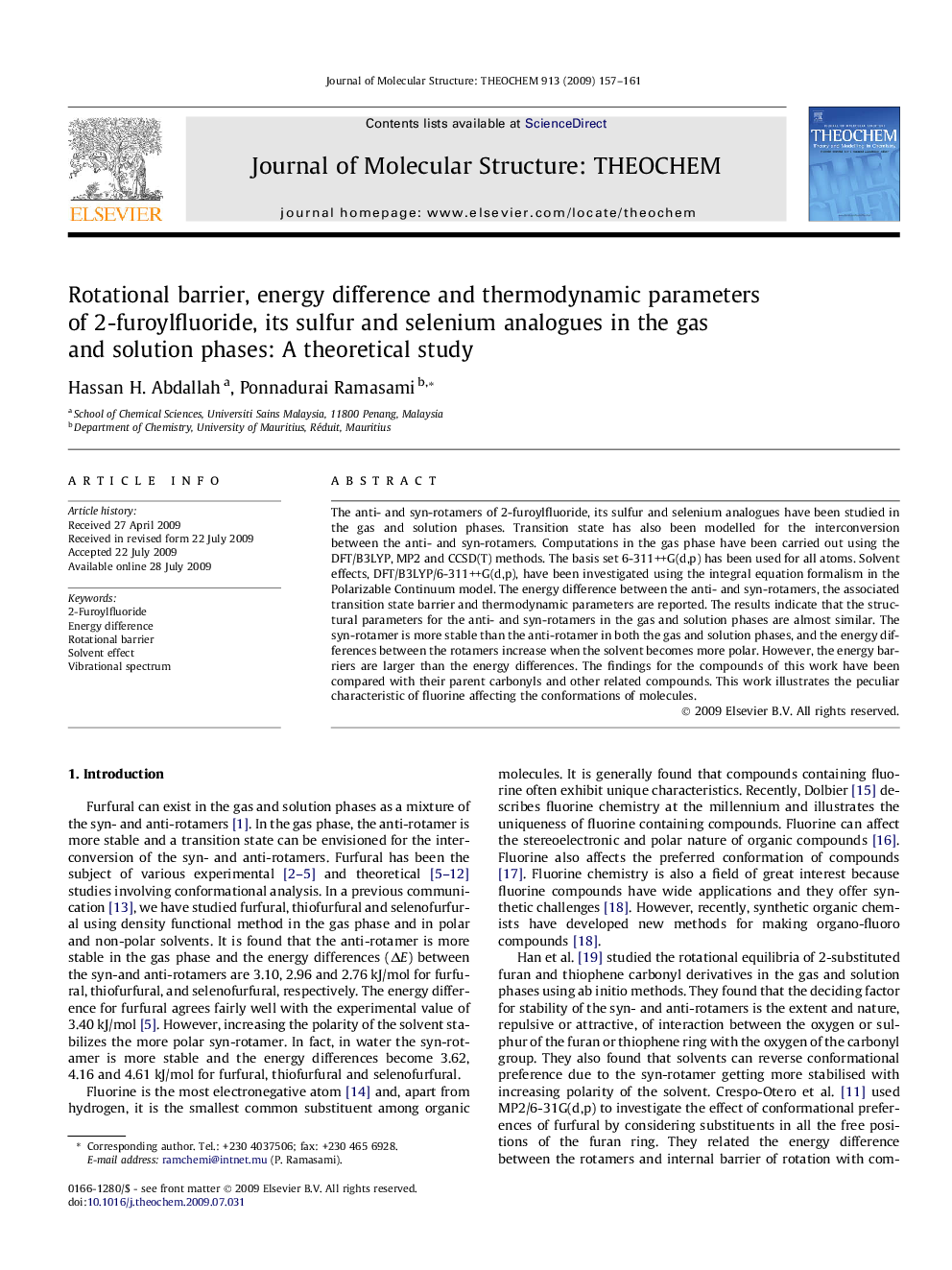| Article ID | Journal | Published Year | Pages | File Type |
|---|---|---|---|---|
| 5417313 | Journal of Molecular Structure: THEOCHEM | 2009 | 5 Pages |
Abstract
The anti- and syn-rotamers of 2-furoylfluoride, its sulfur and selenium analogues have been studied in the gas and solution phases. Transition state has also been modelled for the interconversion between the anti- and syn-rotamers. Computations in the gas phase have been carried out using the DFT/B3LYP, MP2 and CCSD(T) methods. The basis set 6-311++G(d,p) has been used for all atoms. Solvent effects, DFT/B3LYP/6-311++G(d,p), have been investigated using the integral equation formalism in the Polarizable Continuum model. The energy difference between the anti- and syn-rotamers, the associated transition state barrier and thermodynamic parameters are reported. The results indicate that the structural parameters for the anti- and syn-rotamers in the gas and solution phases are almost similar. The syn-rotamer is more stable than the anti-rotamer in both the gas and solution phases, and the energy differences between the rotamers increase when the solvent becomes more polar. However, the energy barriers are larger than the energy differences. The findings for the compounds of this work have been compared with their parent carbonyls and other related compounds. This work illustrates the peculiar characteristic of fluorine affecting the conformations of molecules.
Related Topics
Physical Sciences and Engineering
Chemistry
Physical and Theoretical Chemistry
Authors
Hassan H. Abdallah, Ponnadurai Ramasami,
